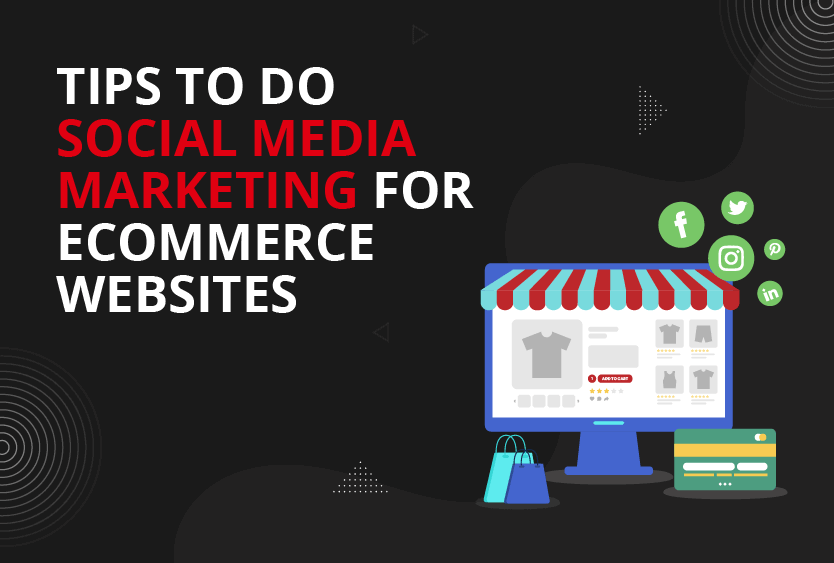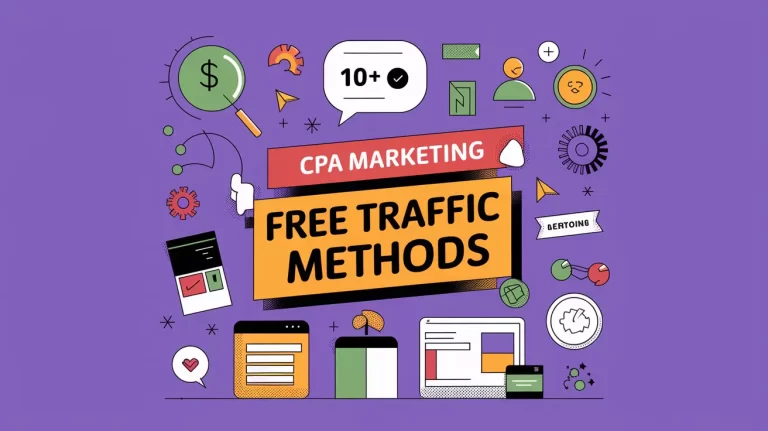Social Media Marketing is one of the best unavoidable marketing strategies for any ecommerce store or website. As you know “VIRAL” keyword is only used for social media, not for search engines. It means, If you want a good number of users for your business or you want to viral your content, Social Media is the best place for you and your business.
This will not only give you online visibility and also increase your sales & trust. Trust is the main thing that motivates a user for an online purchase.
Let’s see the top 10 tips to do social media marketing for ecommerce websites and online stores. But before dive into details, let's see some basics.
Table of Contents
What Is Social Media Marketing?
Social Media Marketing is using social platforms to showcase a company's products and services.
It involves direct engagement with your potential customers, increasing brand awareness, generating revenue, and getting more footfall.
In addition to that, it means leveraging the business's social media presence to add new prospects to your list.
It takes into account:
- Social networking sites: such as Facebook, Twitter
- Multimedia sharing platforms: such as Instagram, YouTube
- Question and Answer platform: such as Quora
- Social News site: for example, Reddit
- Visual platform: for instance, Pinterest
- Customer Review platforms: such as Zomato, Goibibo
10 Tips to Do Social Media Marketing for eCommerce Websites
Let's dive into My Top 10 Tips to Do Social Media Marketing for eCommerce Websites & eCommerce Store.
1. Allow Your Creative Juices to Flow
It is essential to put up interesting content on any social media handle to attract your user.
A common user scrolls about ten posts in a single swipe. So, you have probably a second or less to grab your user's attention.
Here is an idea to channelize your thought process. Imagine your user has had a long day and is returning from work. He is scrolling through social media on his way home and has the least energy. You need to get such a person's attention. What would you do?
He will only stop his finger at something that he finds relatable or addresses his pain point.
Once you understand the mind of your customer, you can come up with creative ideas.
2. Use the Space You Have Got
Depending upon the social media platform, you get a small space to put out your content. Let's say you have a square. Utilize it completely.
Your message should be absolutely clear and bold so that the user can comfortably view it on a mobile phone.
Moreover, whatever you post should be catchy even without turning up the volume, as most users view it without sound.
If you can produce such content, users won't just view it but share it in their circles. They may even save your posts, and this will improve your insights.
In the beginning, there is, of course, a game of hit and trial to figure out what works best for you.
3. Focus on Engaging Your Audience
Remember your motto is to engage with your users and not trying to sell a product or service. It is certainly the end goal, but you need to be in the process of reaching there.
Understand, when a user is browsing through any stories or posts on social media, he is there to entertain himself with whatever catches his eye.
For this, you can plan out weekly engagement activities, like a quiz, a game of ‘This or That.'
Engage in the simplest way possible so that your user does not have to work much. He can just tap on the screen to interact.
Go live, talk to your audience, answer their questions and make them love your work even more.
4. Interact with Micro-Influencers
There are several users on social media platforms who have a good number of followers. You can find the ones that connect with your industry and have a similar target audience.
For instance, if you have a publishing house, you can reach out to writers, publishers, and author pages.
You can ask them to put your message out on their page in the form of stories and posts with a link. It can be both paid and unpaid. This way, you get more eyeballs on your content.
Don't reach out to someone who has no connections to your work or industry, as that may never lead to conversions.
5. Tap into Unconventional Platforms
When a platform is in a nascent stage, you need to start building your brand there.
Do not rely only on the top social media platforms to find your audience. Try out other platforms like Telegram, Spotify, Medium, etc., to gain new users.
In addition to that, you should explore new features of the most used social media platforms. For example, IGTV, Guides on Instagram, or Shorts on YouTube.
Keep your eyes and ears open to see which platform is emerging now and then. Your social media strategy can unfold, dispending upon the platform you choose to build your brand on.
6. Let Data Guide You
Never rely on assumptions or what one member of the team is suggesting. Back your content with data. Follow the insights and analytics over time to see the trend your brand is building.
If you cannot see results in a few months, you need to change your methodology. See which social media platform is gaining maximum attention, invest more time on that.
This will help you understand your audience's behavior which is crucial to bring in sales eventually.
Do not indulge in any guesswork after a day or two of putting some content out. It takes weeks or months to get the right analytics.
7. Make Yourself Familiar with the Ad Funnel
Once you get the hang of the data, you can start working on the advertisements for your eCommerce website. It goes like this:
Brand Awareness: Make people aware of your brand through a video or a display ad.
Product Introduction: Start telling them about the variety of products or services you offer.
Consideration: There are two categories, people who have not seen your product or who have seen your product.
Retargeting Ads: You need to showcase your brand USPs to gain their trust.
Add to Cart: People who have added your product to the cart but haven't bought it yet.
You need to stick to the character limits and convince them to buy your product with an appropriate call to action.
8. Invite Honest Customer Reviews
When people are about to buy a product or service, they always check what other customers say. Make sure that you get reviews from all your happy customers. This not only builds credibility but also increases conversions.
You can even ask your customers to come live on social media platforms and narrate the story about their experience. They are the best ambassadors of your products, after all.
It is important to understand that if a customer buys a product from you, that does not mean that the relationship is over. You have to maintain it with an end to end customer service.
9. Stay Consistent and Devoted
You can try each of the above methods, but they will only work if you are dedicated to the audience you have gained online.
If you do not put up your content frequently or miss out on months, your users would be gone forever.
Pay equal attention to engagement, promotions, sharing knowledge. Stay active on various platforms. If you are keeping busy, hire a professional who can take care of all your social media channels and online presence.
Stick to your brand language and always keep the customer first. Always research what your customer needs and fulfill it through your social media channels.
Best Ecommerce Social Media Marketing Campaigns.
Here are some examples of one of the best social media marketing campaigns:
1. Dabur Vatika's Campaign: A Salute to Female Cancer Patients
The brand is involved in products like hair oil and shampoo. On the contrary, they showcased a bald woman who goes back to her office.
Initially, she was hesitant and tried to cover her hair. Later, she wears a saree and goes to work without covering her head.
It was a creative way to send out a meaningful message. They used BraveAndBeautiful as their hashtag across all social media platforms.
2. L'Oréal: ‘This Is an Ad for Men' Campaign
L'Oréal, very smartly, picked lipsticks on a red background with the head copy saying, ‘This Is An Ad for Men.' It automatically grabs your attention as the product is for women.

They placed few lipsticks in a row with an increasing length of the color stick. It symbolized an increasing percentage of profit in companies having female leadership.
This way, L'Oréal sent out a clear message that as a brand, it stands with women and supports the idea of female leadership with its iconic tagline saying, ‘We're all worth it.'
3. Domino's Pizza: Mother's Day Ad Campaign
Domino's came up with an emotional idea to promote their application.
In the ad, a son leaves his mom in an old-age home. She waits for his call for several days.
Later, she starts stitching and earns some money. She uses the Domino's app to order a pizza for her son, who loves it. Her son comes to the old-age home with a pizza box in his hand.
They used #MaaNahiBhoolti. The subtle message was that the application is easy to use even by the elderly.
Social Media Marketing & Ecommerce FAQs
1. How Can Social Media Help My Ecommerce Business?
Social media platforms are a great way to market your products, services, interact with your potential customers.
Moreover, they are the starting point for any conversion to take place. When users engage with your content, you get to know who they are, and you can present your products in a way they are most likely to receive them. Before you know it, they are your leads.
2. What Is the Difference Between Social Media and Social Commerce?
Social media is applications or websites where people can share their opinions, engage, exchange ideas, etc.
At the same time, Social Commerce is referred to as using social media channels to generate revenue in business.
3. Why Is Social Media Marketing Important for Your Business?
To help your eCommerce business bloom, you need to recognize the power of social media. It can reach your product and services reach masses within a few clicks.
You can sell your products anywhere across the globe without having to move an inch from your place.
4. How Can One Use Social Media Marketing for the Growth of the Ecommerce Business in 2021?
It has been noticed that most people have switched to online shopping due to the pandemic, and therefore, to grow your business, you need to start thinking like a customer.
First, you need to build a relationship with your customer understanding their interests before you start showcasing your products or services.
5. What Is the Difference Between Ecommerce and E-Marketing?
E-Commerce is essentially a way in which customers or businesses buy things from each other using the internet.
On the other hand, E-Marketing forms the wider spectrum of presenting your content, products, services through different channels. It can be social media, websites, newsletters, blogs, etc.
6. Should an E-Commerce Startup Invest More in SMM (Social Media Marketing) or SEO (Search Engine Optimization)?
If you are an eCommerce startup, the first step is to start existing in users' eyes. For this, you need to work on SEO.
Once people know you are there, you can start talking to them, engaging in activities, and eventually selling your products and services.
So that all for today, I have shared My Top 10 Tips to Do Social Media Marketing for Ecommerce Websites and Online stores. I hope you like and also share your strategies and ideas in comment below.






One Comment
best blog for beginners